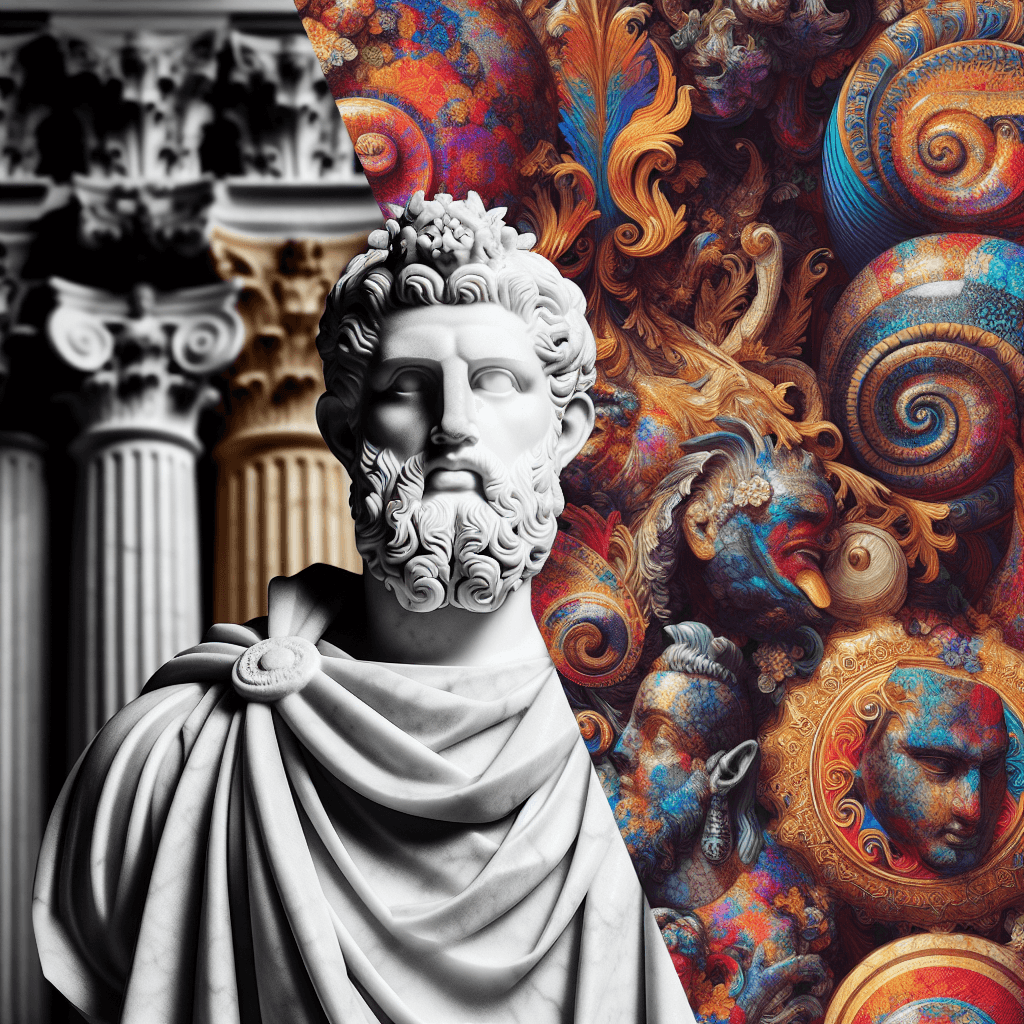Why were ancient marble statues once painted in shockingly bright colors
Those serene, white marble statues we revere are a beautiful lie; they were originally covered in a riot of garish colors for a reason that will completely change how you see the ancient world.


Too Long; Didn't Read
TLDR: Ancient statues were not meant to be white; they were painted in vibrant, often gaudy, colors to look more lifelike and divine. The pure white look is an accident of time, as the paint simply weathered away over centuries.
Beyond the Pale: Why Were Ancient Marble Statues Once Painted in Shockingly Bright Colors?
Picture a classical statue. You’re likely imagining a figure of serene, white marble—a symbol of austere beauty and idealized perfection that has defined Western art for centuries. We see them in museums, stark and pale, representing a world of "noble simplicity and quiet grandeur." But what if this image is a complete misunderstanding? What if the ancient world wasn't monochrome at all, but was instead bursting with color? The truth is, the ancients painted their statues in a dazzling, and to our modern eyes, even shocking, array of bright colors. This post will uncover why the gleaming white sculptures we admire today are merely ghosts of their former selves and explore the vibrant truth of classical art.
The Myth of Classical Whiteness
Our perception of colorless antiquity is largely an accident of time, reinforced by the Renaissance. When the first major excavations of ancient Greek and Roman sites began, the statues unearthed had been weathered by centuries of burial. Rain, soil, and exposure had stripped away almost all of their original paint.
Artists and thinkers of the Renaissance, like Michelangelo, saw these pale figures and were captivated. They equated the unadorned marble with purity, rationality, and an idealized aesthetic. This admiration for "whiteness" was canonized by influential art historians like Johann Joachim Winckelmann in the 18th century, who established the neoclassical ideal that has dominated our view of classical art ever since. For centuries, any evidence of color was ignored or even scrubbed away by restorers who believed they were returning the statues to their "original" state.
More Than Just Decoration: The Purpose of Paint
So why did the Greeks and Romans go to such great lengths to cover up beautiful Carrara and Parian marble? The answer is that the color was not an afterthought; it was essential to the statue's purpose and meaning.
Realism and Lifelikeness
The primary goal was to make the statues appear as lifelike as possible. The ancients didn’t see their gods and heroes as abstract concepts but as living, breathing entities. Paint was used to render realistic skin tones, rosy cheeks, colored eyes, and detailed hair. Clothing was decorated with intricate patterns and vibrant hues, and weapons were highlighted with metallic pigments to mimic bronze or gold. The famous "Augustus of Prima Porta" statue, for example, once featured a brightly painted tunic under his cuirass and rich brown hair, making the emperor appear far more present and powerful than his pale marble form does today.
Narrative and Identity
Color was a crucial storytelling tool. It helped viewers instantly identify figures and understand the narrative being depicted. A hero's distinctive cloak, the specific pattern on a goddess’s peplos (dress), or the gruesome red of a wound on a dying warrior all conveyed vital information. For a largely illiterate public, these visual cues were as important as written text. Color transformed a static sculpture into a dynamic scene from myth or history, making it immediately legible and emotionally resonant.
Religious and Symbolic Significance
In a religious context, color was imbued with deep symbolic meaning. Certain colors were associated with specific deities, and the application of paint was part of the ritual that brought a cult statue to life. Precious and expensive pigments, such as Egyptian blue (a synthetic pigment) or cinnabar for red, were a form of devotional offering. Gold leaf was often applied to signify divinity, wealth, and honor, elevating the statue from a mere representation to a sacred object worthy of worship.
Uncovering the Lost Hues: The Science of Discovery
For decades, the idea of painted statues was a fringe theory. Today, thanks to modern technology, it's an undisputed fact. Archaeologists and conservators use a range of non-invasive techniques to reveal the hidden world of ancient color:
- Raking Light: Shining a light across a statue's surface at a low angle reveals subtle textures, tool marks, and faint incisions that once guided the painter's hand.
- Ultraviolet and Infrared Imaging: These techniques can detect the faint chemical "ghosts" of pigments that are invisible to the naked eye. Certain minerals in the original paints fluoresce under UV light, revealing where they were once applied.
- X-Ray Fluorescence (XRF): By analyzing how a surface reflects X-rays, scientists can identify the specific chemical elements present, such as iron in red and yellow ochres or copper in blues and greens, confirming which pigments were used.
These methods have allowed for stunningly accurate digital and physical reconstructions, showing figures like the "Peplos Kore" with her vividly patterned dress and red hair, completely transforming our understanding of ancient art.
Conclusion
The pristine white statues that fill our museums are not a true reflection of antiquity but rather a romanticized echo shaped by the passage of time. The ancient world was not a serene, colorless landscape; it was a vibrant, multi-hued, and intensely human place. The original practice of painting statues—known as polychromy—was essential for realism, storytelling, and religious devotion. Recognizing this lost color does more than just correct a historical misconception; it allows us to see the ancient world as its inhabitants saw it. So the next time you stand before a Greek or Roman statue, look past the pale marble and imagine it as it was meant to be seen: alive with color, detail, and story.


